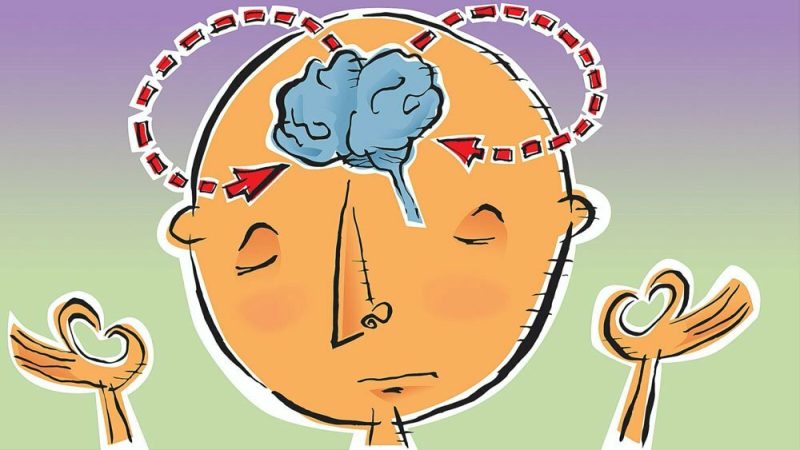“The goal of meditation isn’t to control your thoughts, it’s to stop letting them control you”
As research documenting the benefits of meditation has grown over the last decade, meditation has become increasingly synonymous with wellness. Companies are now including meditation in their on-site employee wellness offerings and mainstream medicine is starting to recognise its benefits.

So what is it?
Meditation can be described in many different ways, but in essence, it is a practice to cultivate awareness of the present moment. Through honing this ability to be aware, we can achieve a sense of inner peace, clarity, and emotional stability, seen as the foundations of a healthy, happy, and successful life.
Meditation and Mental Health
Meditation is associated with a whole host of physiological and psychological benefits. Here are some ways in which meditation can help with different mental health struggles:
Anxiety – as we strengthen our awareness muscle through meditation, we can begin to notice the physical and mental signs that we’re are starting to feel anxious. The practice can help us slow our heart rates and catch our spiraling thoughts before they escalate into a full blown anxiety attack.
Depression – one of the struggles of depression is that we become very tunnel-visioned. As we practice the noticing our thoughts without judgment and letting them go instead of holding on to them, we can start to take a step back from some of our depressive thoughts and get some healthy perspective.
Stress – a certain amount of stress is normal, but chronic stress can wreak havoc on the body with surging cortisol levels increasing the risk of heart attacks and strokes, increase inflammation, and disrupt our immune response. Stress reduction is vital to help us reduce the risk of many health conditions. A consistent meditation practice helps us relax the body and mind and lower levels of cortisol.
Grief – in order to be able to move through grief, we need to feel it to heal it. The practice of meditation trains us to be able to sit with our feelings and be with them, instead of resisting and avoiding them. This practice of being with our feelings it the key to be able to heal from any difficult or stuck feelings we experience.
Trauma – when we have experienced something traumatic, our nervous system has often become more sensitive and we are more likely to go into fight or flight and react from a place of heightened emotions. This can be emotionally exhausting for us and lead to more conflict in our relationships. Meditation can help us reset our nervous systems so that we can shift into our safe and social nervous system at will. It can also help us increase our window of capacity for stress so that we are not triggered so easily into fight or flight.
Relationships – good communication and conflict management is predicated on being able to hold space for the other person and respond to them instead of reacting to them. We can only do this when we can be mindful of and manage the emotions that are being triggered within us. Meditation helps us develop this capacity to notice what is arising and pause, instead of reacting straight away. It helps us create a gap between our internal emotions/thoughts and external reactions.
Changing personality tendencies – when we recognise that a particular tendency we have within our personalities is no longer serving us, the first step in changing is to notice when it arises. For example, if we have a perfectionist tendency, people-pleasing tendency, or achiever tendency that we’re trying to work on, we need to be able to notice when that thought pattern related to that tendency is arising so that we can either replace it or redirect it or meet it with understanding. This is where a meditation practice can help train our attention on this.
Concentration and productivity – the practice of meditation helps to decrease mind-wandering and develops our capacity for single-pointe focus. Having control over our minds can help us bring our dreams and goals into fruition.
How do I get started?
If you haven’t meditated before or are just starting out, you may benefit from a guided meditation recording where someone gently talks you through the process. Many people find Headspace, Calm and Insight Timer helpful, but there is a plethora of meditation apps that can teach the basics of meditation. The main thing is to make a commitment to a daily practice. Frequent, shorter meditation sessions are better than infrequent, longer sessions: it is better to do consistent short 5 minute meditations on a daily basis than an hour long meditation once every 3 weeks.
What type of meditation should I do?
There are many types of meditations out there, some of which are detailed here and here. For the mental health benefits listen above, a good starting point is to choose a meditation that uses the body or breath as the anchor of focus. These meditations can help us slow and calm our minds and attune us to our bodies.
How to celebrate World Meditation Day?
Take 5 minutes now!
Find a quiet space where you can sit comfortably, either on a chair with your feet flat on the ground or cross-legged on the floor. Remember that the attitude we are trying to cultivate is to accept what is there without judging.
Gently close your eyes (or leave them open to read these instructions), and allow your body to rest in stillness. Take a deep breath in, and gently and slowly breathe out. Take another deep breath in, and gently and slowly breathe out. Do this one more time. Ensure that your back, neck, and head are in a straight line, with your chin parallel to the ground. Become aware of your breathing, without changing it. Just notice the pace. Notice where you feel your breath in your body the most. Perhaps it’s the lungs, or the abdomen, or the nostrils where the breath enters. Allow your mind to linger there for a few breaths, just noticing the sensation of breathing, the sensation of the body filling up and emptying out. Now, move your attention to your body. Just notice any parts of the body that hold any tension and allow those parts to relax. You can do this systemically through scanning the body from the toes up through to the crown of the head. When finished, bring your attention back to your breath for 3 breaths, breathing in and out slightly deeper than your normal breath. Now, allow your breath to return to it’s normal pace, and whenever you’re ready, you can gently open your eyes.
If you are interested in scheduling a session with Bhavna Bharvani or have further queries, please contact us today.
References
https://www.headspace.com/meditation/benefits
https://www.prevention.com/health/a22679621/health-benefits-of-meditation/

